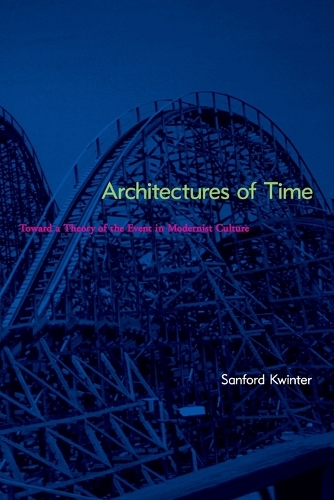
Architectures of Time: Toward a Theory of the Event in Modernist Culture
(Paperback)
Publishing Details
Architectures of Time: Toward a Theory of the Event in Modernist Culture
By (Author) Sanford Kwinter
MIT Press Ltd
MIT Press
23rd August 2002
United States
Classifications
Tertiary Education
Non Fiction
Theory of art
History: theory and methods
Philosophical traditions and schools of thought
700.105
Physical Properties
Paperback
252
Width 152mm, Height 229mm, Spine 15mm
431g
Description
In this text, Sanford Kwinter offers a critical guide to the modern history of time and to the interplay between the physical sciences and the arts. Tracing the transformation of 20th-century epistemology to the rise of thermodynamics and statistical mechanics, Kwinter explains how the demise of the concept of absolute time, and of the classical notion of space as a fixed background against which things occur, led to field theory and a physics of the "event." He suggests that the closed, controlled, and mechanical world of physics gave way to the approximate, active, and qualitative world of biology as a model of both scientific and metaphysical explanation. Kwinter examines theory of time and space in Einstein's theories of relativity and shows how these ideas were reflected in the writings of the sculptor Umberto Boccioni, the town planning schema of the Futurist architect Antonio Sant'Elia, the philosophy of Henri Bergson, and the writings of Franz Kafka. He argues that the writings of Boccioni and the visionary architecture of Sant'Elia represent the earliest and most profound deployments of the concepts of field and event. In discussing Kafka's work, he moves away from the thermodynamic model in favor of the closely related one of Bergsonian dur e, or virtuality. He argues that Kafka's work manifests a coherent cosmology that can be understood only in relation to the constant temporal flux that underlies it.
Reviews
"In whose time do you and the work of art exist Pamela Lee has written the founding question for a new criticism."--Molly Nesbit, Department of Art, Vassar College "Readers of Deleuze will be attracted to this book's complexity. Architectures of Time poses real problems for use in considering modern culture and our own: How shall we understand the pressure of events What constitutes a grasp of nature How does a historical example help us In the course of Kwinter's case studies, both time and design come alive." Molly Nesbit , Department of Art, Vassar College "Readers of Deleuze will be attracted to this book's complexity. Architectures of Time poses real problems for use in considering modern culture and our own: How shall we understand the pressure of events What constitutes a grasp of nature How does a historical example help us In the course of Kwinter's case studies, both time and design come alive."--Molly Nesbit, Department of Art, Vassar College "Like Gyorgy Kepes and Moholy-Nagy before him, Kwinter touches everything. His real genius is his capacity to fold almost any object into the problem at hand. He builds a network of bridges between zones that seem impossibly distant--Kafka and Einstein, Bergson and Sant'Elia--and charges the terrain between them with potential."--Bruce Mau, Bruce Mau Design "Kwinter's unspoken deconstruction of Sigfried Giedeon's space-time mantra frees architecture from its half-century bondage to classical modernism and opens an emergent organicism to a powerful window on contemporary thought."--Peter Eisenman, architect
Author Bio
Sanford Kwinter is a New York-based writer. He teaches design in the School of Architecture at Rice University.
